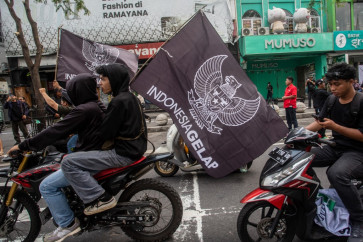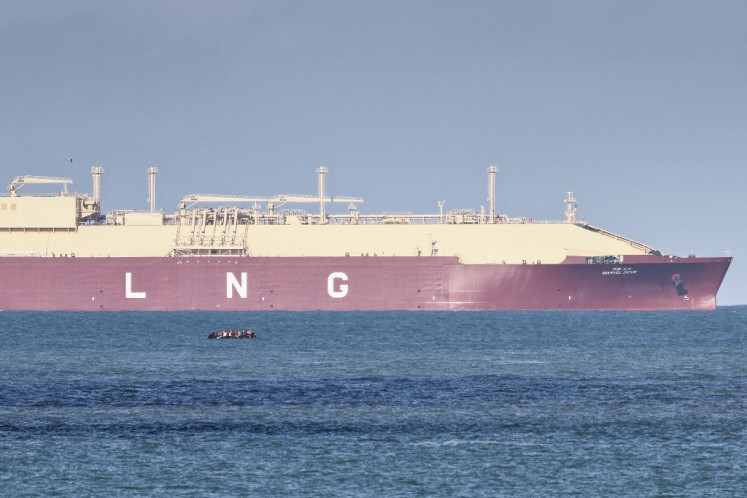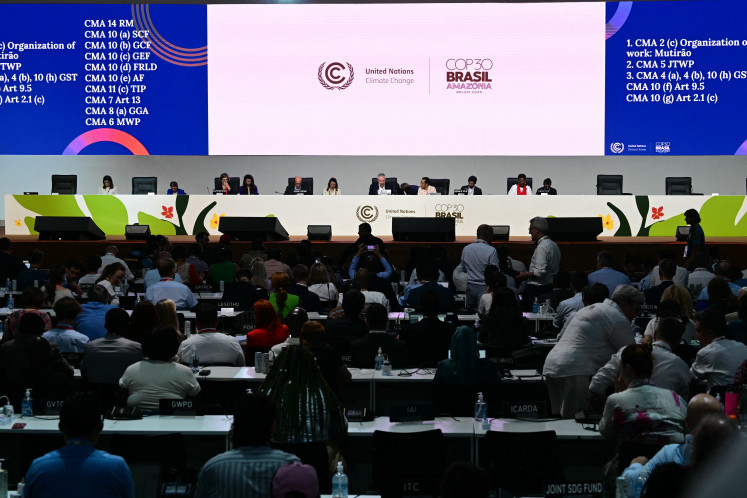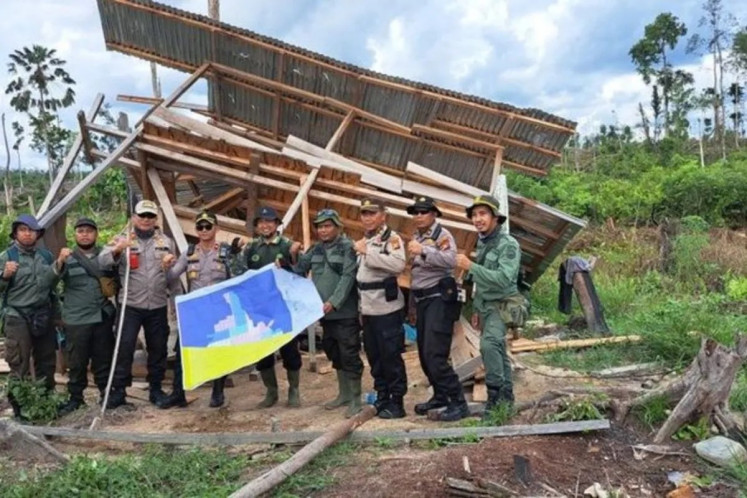Popular Reads
Top Results
Can't find what you're looking for?
View all search resultsPopular Reads
Top Results
Can't find what you're looking for?
View all search resultsDisaster preparedness matters
The BMKG said in 2016 that all 22 tsunami-warning buoys placed in Indonesian waters following the 2004 tsunami no longer worked because of theft and vandalism.
Change text size
Gift Premium Articles
to Anyone
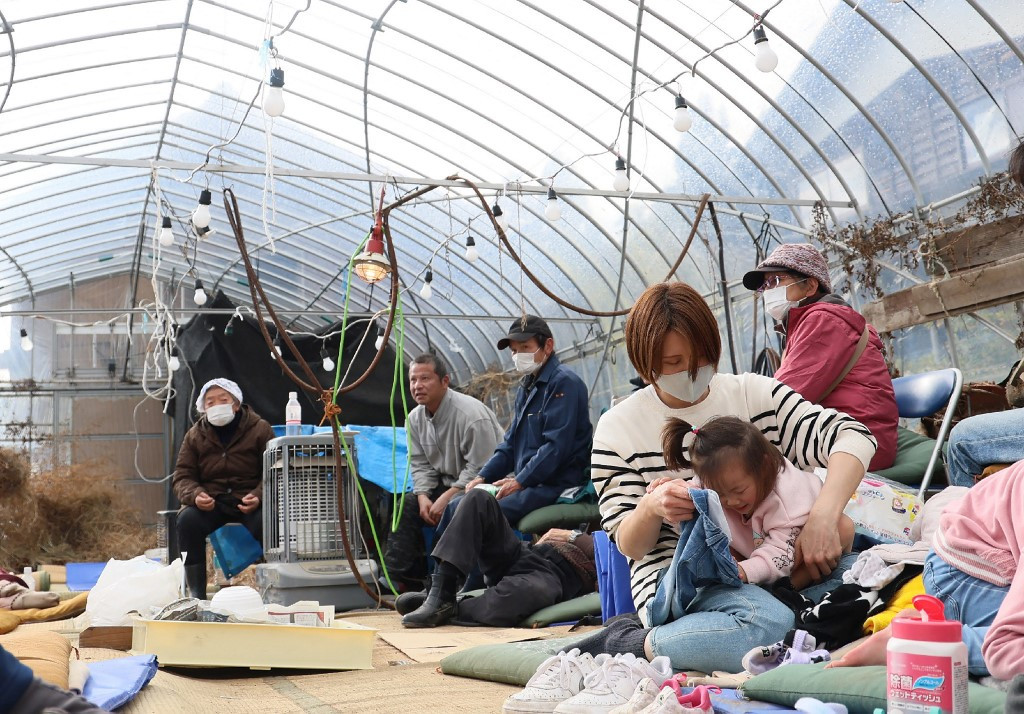 Residents shelter inside a plastic greenhouse after being evacuated in the city of Wajima, Ishikawa Prefecture, on Jan. 2, 2024, a day after a major 7.5 magnitude earthquake struck the Noto region in Ishikawa prefecture. Japanese rescuers battled against the clock and powerful aftershocks on Jan. 2 to find survivors of a major earthquake that struck on New Year's Day, killing at least 48 people and causing widespread destruction. (AFP/Jiji Press)
Residents shelter inside a plastic greenhouse after being evacuated in the city of Wajima, Ishikawa Prefecture, on Jan. 2, 2024, a day after a major 7.5 magnitude earthquake struck the Noto region in Ishikawa prefecture. Japanese rescuers battled against the clock and powerful aftershocks on Jan. 2 to find survivors of a major earthquake that struck on New Year's Day, killing at least 48 people and causing widespread destruction. (AFP/Jiji Press)
O
ur hearts go out to the people and government of Japan who have been impacted by the magnitude-7.6 earthquake and subsequent tsunami on New Year’s Day.
The disaster came only days after we commemorated the 19th anniversary of the Indian Ocean giant earthquake and tsunami, of which Japan joined other good Samaritans across the world in helping Indonesia rebuild Aceh, the territory hit hardest by the calamities.
Japan also played a pivotal role in helping the people of Yogyakarta and Central Java regain their feet following the devastating 2016 quake.
As of Thursday, more than 50 people were reported missing as Japanese rescuers battled to reach hundreds still cut off from help three days after the quake left at least 78 dead. The search for survivors continues as more than a dozen communities remained isolated following landslides and blocked roads.
From news coverage, we saw how quickly the early warning system worked in Japan and how efficiently residents responded. We can imagine the damage done by the disaster would have been much more severe had the system been not in place or failed.
Following the quake on Monday afternoon, earthquake and tsunami warnings were sent to phones and flashed across television screens advising residents in specific areas of the coast to immediately evacuate.
By Monday evening, the Japanese government had ordered more than 97,000 people in nine prefectures on the western coast of Japan's main island Honshu to flee their homes for safer places. They were set to spend the night in sports halls and school gymnasiums, commonly used as evacuation centers in emergencies.
We are reminded how Indonesia's warning and response system is lacking, even after the Aceh tsunami in 2004.
After a 7.5 magnitude hit Central Sulawesi on Sep. 28, 2018, many criticized how the Meteorology, Climatology and Geophysics Agency (BMKG) lifted the tsunami warning just over 30 minutes after the initial shock.
The repeated tsunami warning alerts sent to residents via text message may not have reached the targeted communities as the quake had paralyzed the power and communications lines. Sadly, there were no sirens along the coast.
According to a 2018 report, Indonesia's tsunami early warning system is currently made up of a network of 170 seismic broadband stations, 238 accelerometer stations and 137 tidal gauges.
According to the BMKG, the current system in place is "very limited".
More recently, we witnessed the tragic death of 23 hikers who were scaling Mount Marapi in West Sumatra when the volcano erupted. Their lives could have been saved had the authorities cordoned off the volcano for human activities.
Alas, local officials continued granting hiking permits despite warnings from the Vulcanology and Geological Disaster Mitigation Center (PVMBG).
The World Bank has identified that the eastern and western sections of Java, the coastal regions of Sumatra, parts of western and northern Sulawesi, and southeastern Papua islands are highly vulnerable to multiple climate hazards.
All in all, the international financial institution estimated that 40 percent of the country’s 270 million plus inhabitants are at risk.
The western and eastern parts of Java, the most populated island in the country, are the most vulnerable to the impacts of geological and hydro-meteorological hazards.
Seated on the Pacific Ring of Fire, the Indonesian archipelago straddles the intersection of three major tectonic plates that make the country particularly prone to volcanic eruptions, earthquakes and tsunamis.
We were shocked when the BMKG said in 2016 that all 22 tsunami-warning buoys placed in Indonesian waters following the 2004 tsunami no longer worked because of theft and vandalism.
Money is crucial in disaster prevention, but it does not help if education and awareness are lacking.
Indonesia’s rich natural resources come with risks, and as we have seen many times, come with a steep price. We need to be ready ahead, during and after calamity strikes. Natural disaster preparedness should be our second nature.




